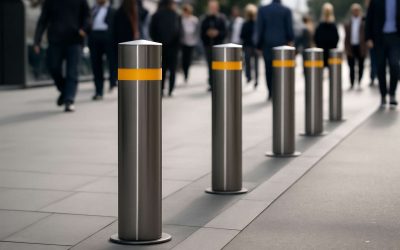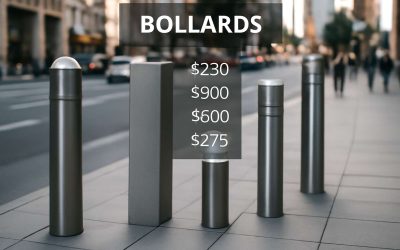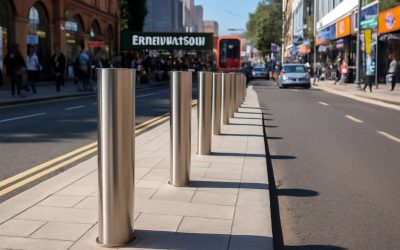
Whether directing pedestrians through a city centre, protecting parking bays or securing building perimeters, timber bollards are strong, durable and highly effective at blocking access to areas where they’re needed. Their natural look and soft colouring mean that they can also add to the visual appeal of a building’s surroundings without detracting from its design.
Wood bollards are a great way to enhance the safety of pedestrians in busy urban locations and help to avoid collisions with vehicles, particularly where traffic signals fail or crossings are unsafe. They are also a great way to stop cars from mounting the curb in urban areas, where this restricts pavement access for pedestrians and creates danger for drivers. These are particularly popular with councils and local businesses looking to improve pedestrian and driver safety.
They can be as permanent as the concrete cannons cemented into a wharf, degrading slowly over centuries, or as temporary as the bright orange plastic posts slung around by road crews before work starts in the morning. Many bollards are in between, installed so that they can be temporarily lowered to allow emergency or maintenance vehicles to pass, but with enough strength and structure to resist vehicle impact.
Bollards come in a wide variety of sizes, shapes and finishes. A popular option is ductile iron, which looks similar to cast iron but has the advantage of being more flexible and resilient than metals like steel or aluminium. This flexibility helps to prevent pieces of the bollard and its cover from becoming dangerous shrapnel on impact. Ductile iron can be moulded into a range of decorative and functional designs, so that it can be used to create a distinctive visual identity for security or traffic control applications.
Another great option is polyurethane, which bends on impact rather than breaking or causing damage to the car. These are often seen in parking lots, guiding cars between parked cars and acting as a lane delimiter. They can be designed to be eye-catching, and are often painted in bright colours or reflective covers to make them more visible in low light conditions.
Alternatively, a more traditional option is a metal or concrete decorative bollard that’s designed to look like a post with a high-visibility cover. They can be painted to match the surrounding aesthetic, or powder coated to ensure corrosion protection and easy maintenance.
Some decorative bollards are built to a higher level of impact resistance, so that they can hold back several waves of vehicles at once. These are typically rated with a K-rating or ASTM crash rating, and have to be designed to withstand the force of multiple vehicles simultaneously.
Embedded bollards are those that have been permanently set into place as part of the structural site design for an outdoor space, usually made of durable steel and filled with concrete. They can be covered with a decorative or functional cover, which gives them a more architectural identity and can help to delineate an area. They are often coloured to match the landscape and architectural design, or have a unique pattern or type of grain known as ‘figuring’. These can include tiger stripe, bird’s eye and quilted patterns.



0 Comments